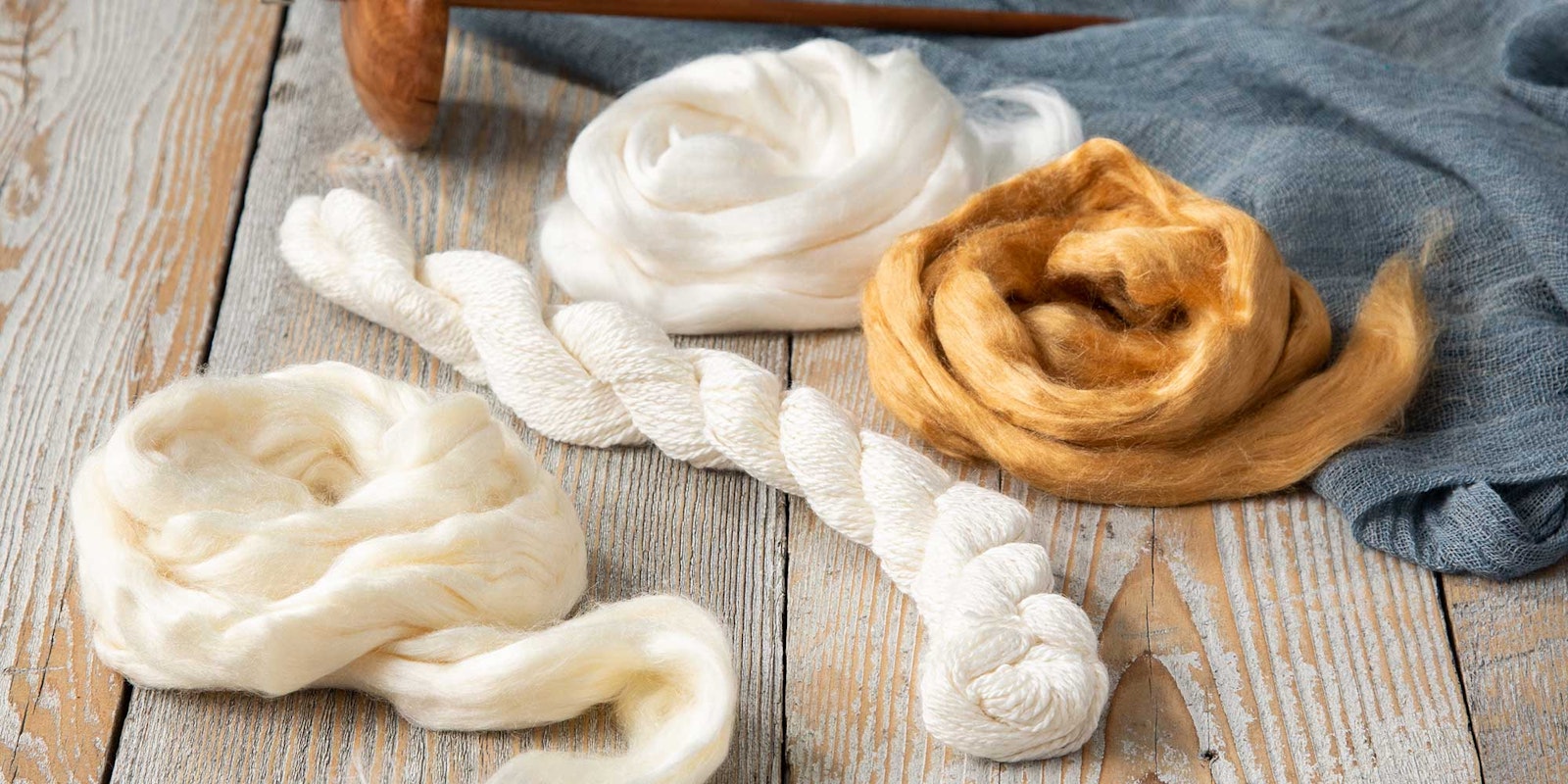Subscriber Exclusive
Expert Tips for Spinning and Plying Silk
Working with silk? Take your skills up a notch with these handy resources.
Working with silk? Take your skills up a notch with these handy resources. <a href="https://spinoffmagazine.com/expert-tips-for-spinning-and-plying-silk/">Continue reading.</a>
https://spinoffmagazine.com/cdn-cgi/image/format=auto/https://www.datocms-assets.com/75073/1730218879-spinning-and-plying-silk-header.jpg?auto=format&w=900
With a few tips and tricks, you’ll end up with more control over silk’s slippery fibers, allowing you to spin finer, more consistent singles. Photo by Matt Graves
Whether you’re already a silk spinner, or you haven’t yet dipped your toe in the water, you’ll want to take a look at two great compilations available in the Spin Off Library! First off is a resource on making an airy preparation called a tussie mussie for spinning fine silk, followed by a resource on plying gossamer threads in the Orenburg tradition. Each resource has an article and a how-to video all in one place.
What is a tussie mussie?
Spinning lustrous, slippery silk is unlike anything else—and commercial silk top can be a challenge to learn to control! For a unique approach to managing silk tops, check out Kim McKenna’s expert instructions for making a tussie mussie in her article “A Spinner’s Tussie Mussie.” Kim found it challenging to preserve the silk’s luster while trying to manage a fine, dense preparation. So she came up with a way to loosen and arrange the commercial eri silk sliver to give the spinner more control and the yarn more loft. See how she does it step by step in her article, and then watch editor Kate Larson demonstrate it in the video.
The term "tussie mussie" refers to the shape of a Victorian-era flower arrangement. The method Kim uses for silk is remarkably similar to how we might prepare flax on a distaff—in miniature!
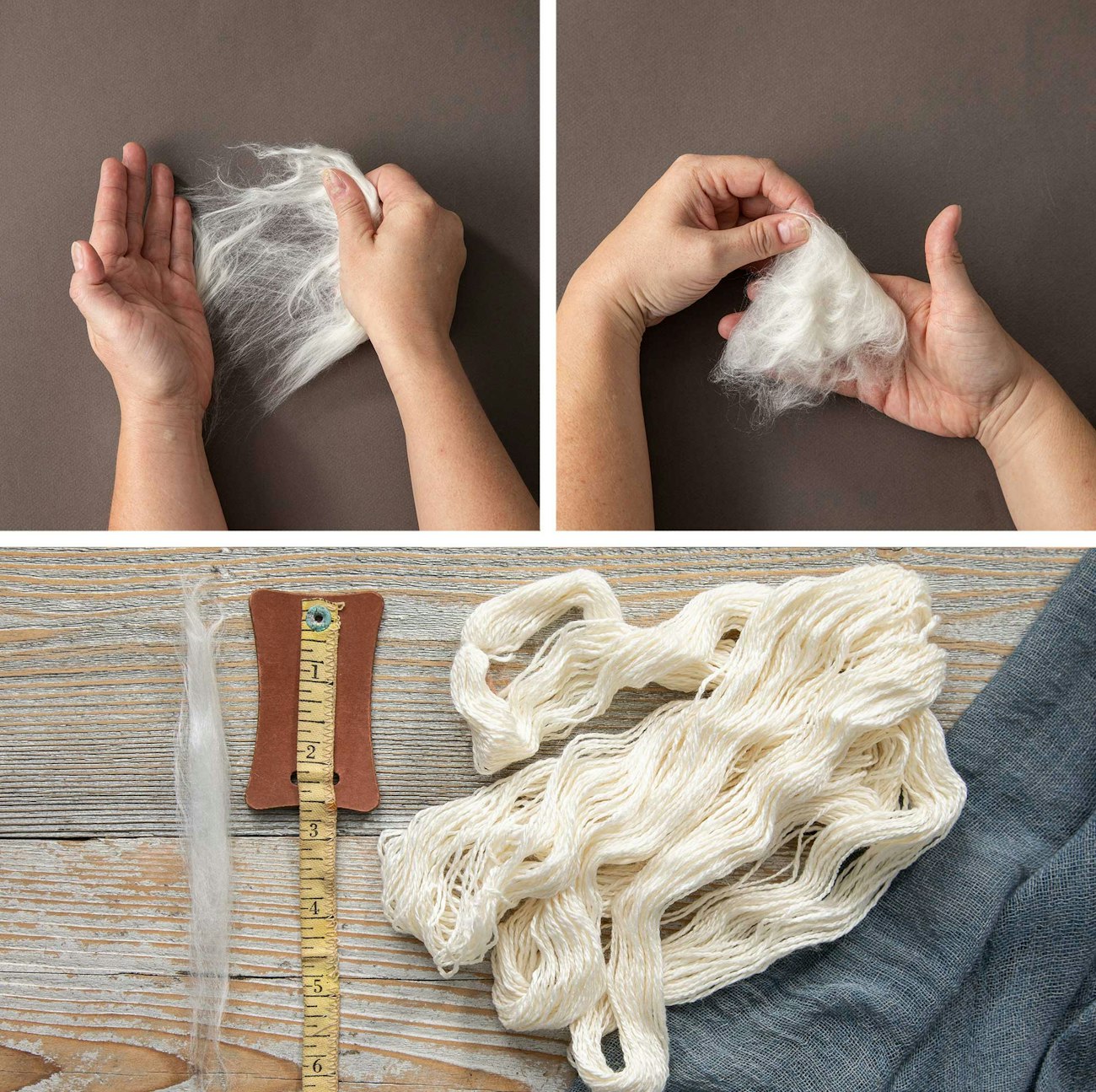 Kim’s method involves preparing the eri silk by redistributing the fibers and creating a crisscross orientation through a series of steps, which allows her to keep the fibers in check during spinning. Photos by Matt Graves
Kim’s method involves preparing the eri silk by redistributing the fibers and creating a crisscross orientation through a series of steps, which allows her to keep the fibers in check during spinning. Photos by Matt Graves
Can I ply on a supported spindle?
Knitters and spinners in the Orenburg region of Russia often work with a single strand of handspun cashmere yarn that is plied with silk for strength. In her article “Plying the Orenburg Way,” Galina Khmeleva explains how and why to ply this way. Galina has traveled the United States teaching classes on the Orenburg style of knitted lace and Orenburg’s spinning history using the supported spindle. According to Galina, “The plying techniques always managed to captivate the spinning audience.” Galina’s article walks you through how to spin and then provides in-depth instructions for how to ply the Orenburg way, using a Russian-style supported spindle with a fine fiber and silk. Then, in her video, Galina offers a complete lesson on how to ply. She is convinced that anyone can do it with a little practice!
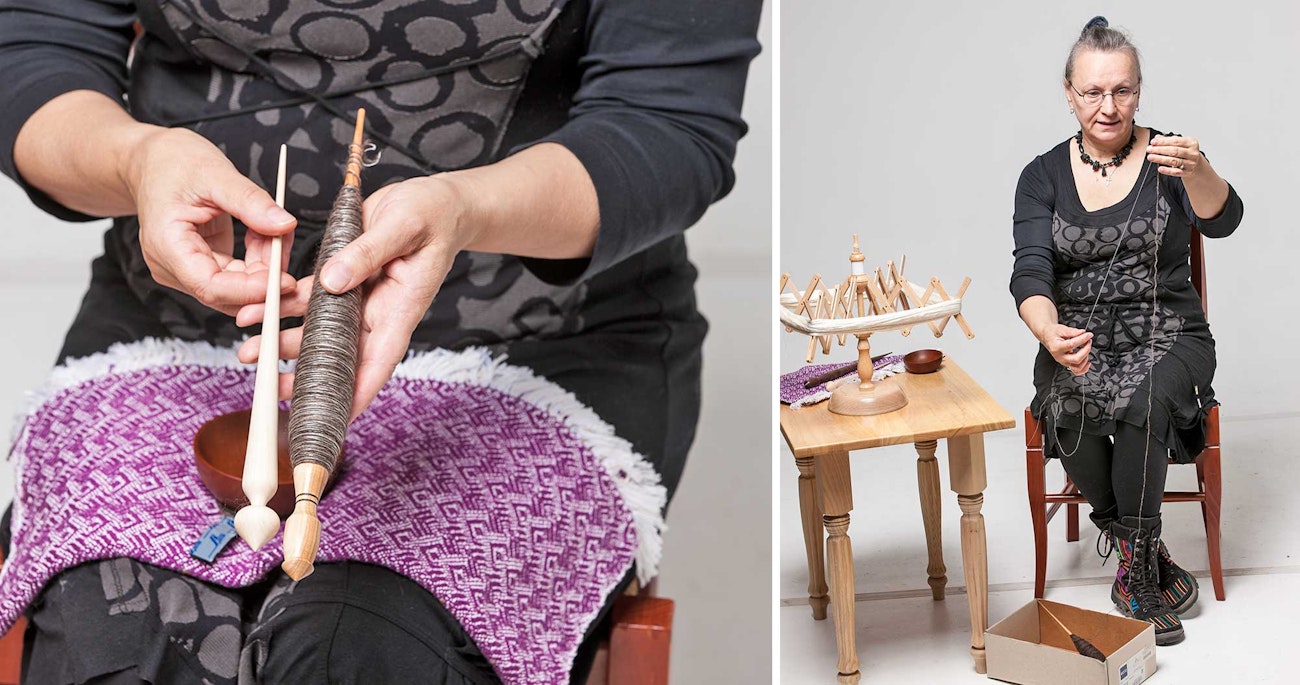 Left: Galina holds her Russian-style supported spindles; the larger one is used for plying. Right: To ply, Galina leaves the silk singles in a skein, allowing it to feed out freely from a swift. The spindle of her cashmere is in a shoebox to prevent it from rolling around. Now she is ready to ply! Photos by Joe Coca
Left: Galina holds her Russian-style supported spindles; the larger one is used for plying. Right: To ply, Galina leaves the silk singles in a skein, allowing it to feed out freely from a swift. The spindle of her cashmere is in a shoebox to prevent it from rolling around. Now she is ready to ply! Photos by Joe Coca
These two resources combine the best of both worlds—expert written information and step-by-step photography from Spin Off, plus the convenience of video, eliminating the need to juggle multiple sources as you learn a new skill. Subscribers can click below to find these resources in the Spin Off Library.
Tussie Mussie Preparation Resources for Spinning Silk
Current subscribers to Spin Off can find “A Spinner’s Tussie Mussie” and The Tussie Mussie Fiber Preparation how-to video in the Spin Off Library here.
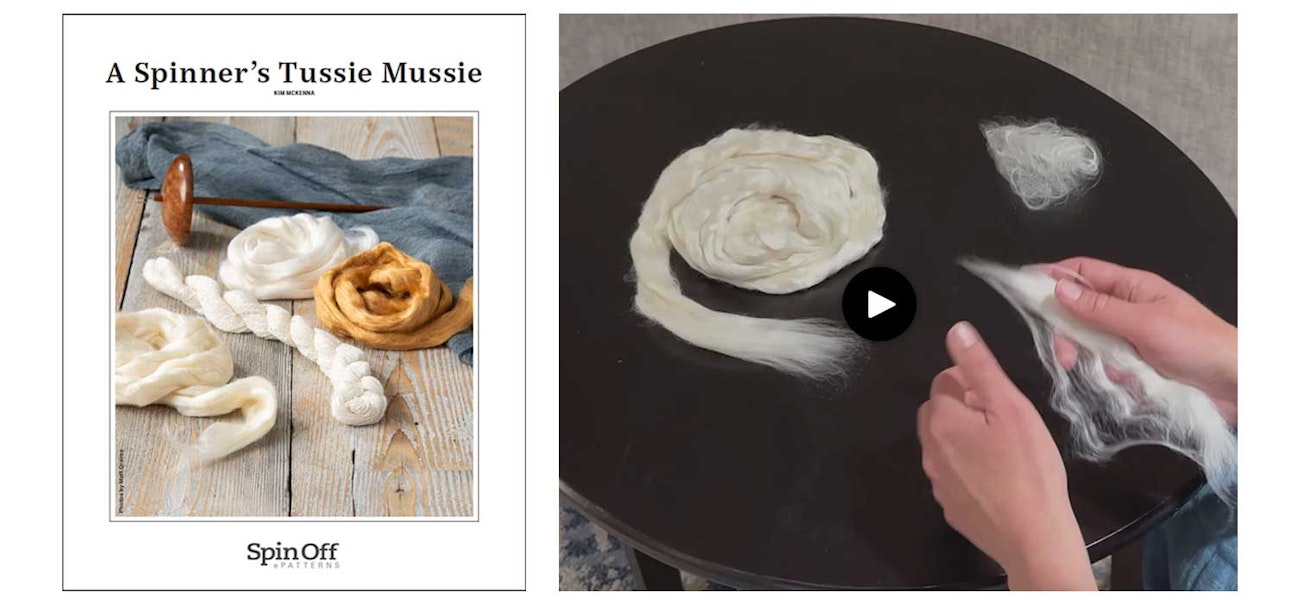
Resources for Plying Silk in the Orenburg Way
Current Spin Off subscribers can access “Plying the Orenburg Way” and the Spinning Gossamer Threads with Galina Khmeleva video in the Spin Off Library here.
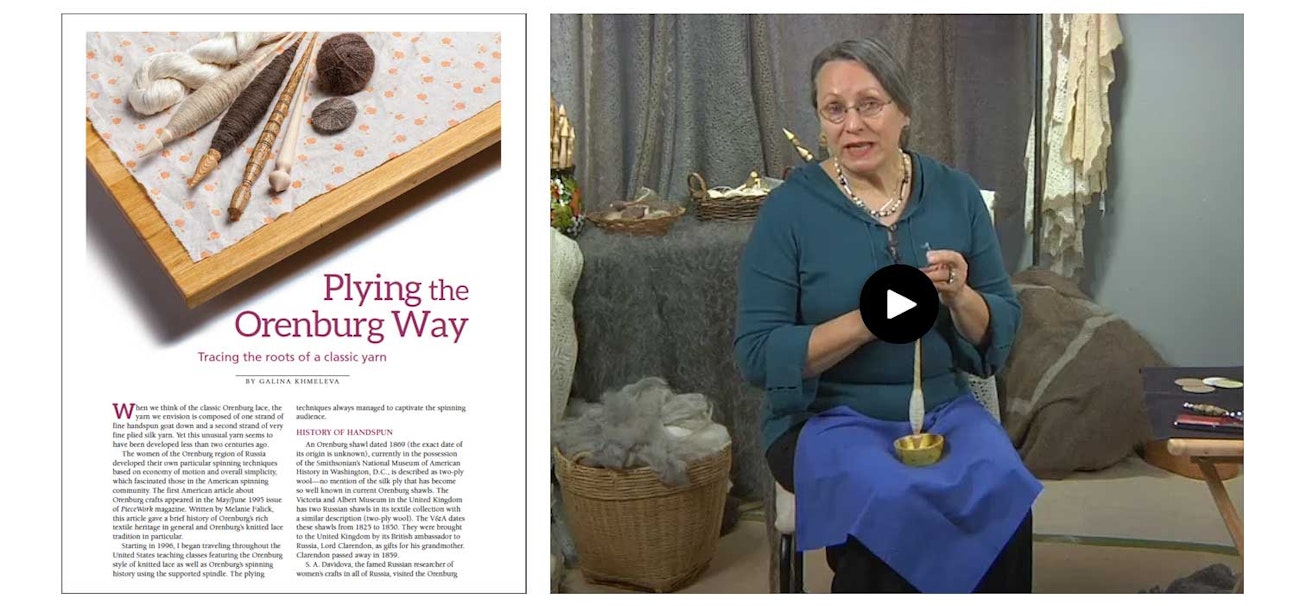
SUBSCRIBER EXCLUSIVE
Unlock the Full Article with a Spin Off Subscription
Get instant access to this article and the entire Spin Off library of projects, inspiration, and expert instruction. With your subscription, you’ll receive:
Master the art and science of spinning—from wheel mechanics to fiber prep
Learn from experienced spinners, dyers, and fiber artists in every issue
Explore in-depth tutorials, inspiring projects, and trusted techniques
Includes full access to print and digital issues of Spin Off Magazine
Spin Off explores the art and craft of making yarn. Each issue connects you to new and familiar voices in the handspinning community and is packed with information about fibers, tools, and traditions to inspire your creativity.
Plans start at just $4.99/month. Cancel anytime.
Whether you’re already a silk spinner, or you haven’t yet dipped your toe in the water, you’ll want to take a look at two great compilations available in the Spin Off Library! First off is a resource on making an airy preparation called a tussie mussie for spinning fine silk, followed by a resource on plying gossamer threads in the Orenburg tradition. Each resource has an article and a how-to video all in one place.
What is a tussie mussie?
Spinning lustrous, slippery silk is unlike anything else—and commercial silk top can be a challenge to learn to control! For a unique approach to managing silk tops, check out Kim McKenna’s expert instructions for making a tussie mussie in her article “A Spinner’s Tussie Mussie.” Kim found it challenging to preserve the silk’s luster while trying to manage a fine, dense preparation. So she came up with a way to loosen and arrange the commercial eri silk sliver to give the spinner more control and the yarn more loft. See how she does it step by step in her article, and then watch editor Kate Larson demonstrate it in the video.
The term "tussie mussie" refers to the shape of a Victorian-era flower arrangement. The method Kim uses for silk is remarkably similar to how we might prepare flax on a distaff—in miniature!
 Kim’s method involves preparing the eri silk by redistributing the fibers and creating a crisscross orientation through a series of steps, which allows her to keep the fibers in check during spinning. Photos by Matt Graves
Kim’s method involves preparing the eri silk by redistributing the fibers and creating a crisscross orientation through a series of steps, which allows her to keep the fibers in check during spinning. Photos by Matt Graves
Can I ply on a supported spindle?
Knitters and spinners in the Orenburg region of Russia often work with a single strand of handspun cashmere yarn that is plied with silk for strength. In her article “Plying the Orenburg Way,” Galina Khmeleva explains how and why to ply this way. Galina has traveled the United States teaching classes on the Orenburg style of knitted lace and Orenburg’s spinning history using the supported spindle. According to Galina, “The plying techniques always managed to captivate the spinning audience.” Galina’s article walks you through how to spin and then provides in-depth instructions for how to ply the Orenburg way, using a Russian-style supported spindle with a fine fiber and silk. Then, in her video, Galina offers a complete lesson on how to ply. She is convinced that anyone can do it with a little practice!
 Left: Galina holds her Russian-style supported spindles; the larger one is used for plying. Right: To ply, Galina leaves the silk singles in a skein, allowing it to feed out freely from a swift. The spindle of her cashmere is in a shoebox to prevent it from rolling around. Now she is ready to ply! Photos by Joe Coca
Left: Galina holds her Russian-style supported spindles; the larger one is used for plying. Right: To ply, Galina leaves the silk singles in a skein, allowing it to feed out freely from a swift. The spindle of her cashmere is in a shoebox to prevent it from rolling around. Now she is ready to ply! Photos by Joe Coca
These two resources combine the best of both worlds—expert written information and step-by-step photography from Spin Off, plus the convenience of video, eliminating the need to juggle multiple sources as you learn a new skill. Subscribers can click below to find these resources in the Spin Off Library.
Tussie Mussie Preparation Resources for Spinning Silk
Current subscribers to Spin Off can find “A Spinner’s Tussie Mussie” and The Tussie Mussie Fiber Preparation how-to video in the Spin Off Library here.

Resources for Plying Silk in the Orenburg Way
Current Spin Off subscribers can access “Plying the Orenburg Way” and the Spinning Gossamer Threads with Galina Khmeleva video in the Spin Off Library here.

 Kim’s method involves preparing the eri silk by redistributing the fibers and creating a crisscross orientation through a series of steps, which allows her to keep the fibers in check during spinning. Photos by Matt Graves
Kim’s method involves preparing the eri silk by redistributing the fibers and creating a crisscross orientation through a series of steps, which allows her to keep the fibers in check during spinning. Photos by Matt Graves  Left: Galina holds her Russian-style supported spindles; the larger one is used for plying. Right: To ply, Galina leaves the silk singles in a skein, allowing it to feed out freely from a swift. The spindle of her cashmere is in a shoebox to prevent it from rolling around. Now she is ready to ply! Photos by Joe Coca
Left: Galina holds her Russian-style supported spindles; the larger one is used for plying. Right: To ply, Galina leaves the silk singles in a skein, allowing it to feed out freely from a swift. The spindle of her cashmere is in a shoebox to prevent it from rolling around. Now she is ready to ply! Photos by Joe Coca 


